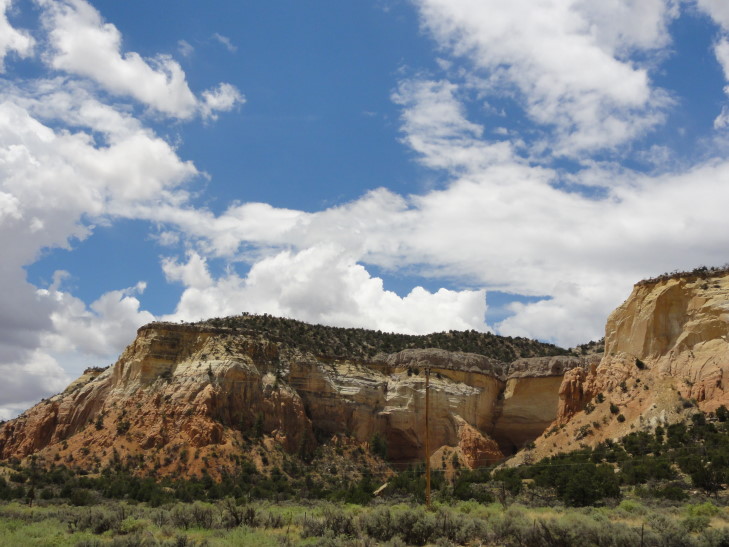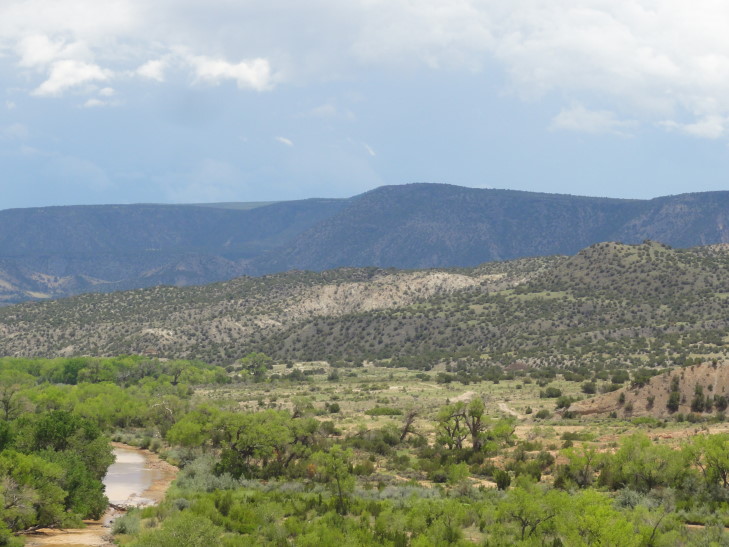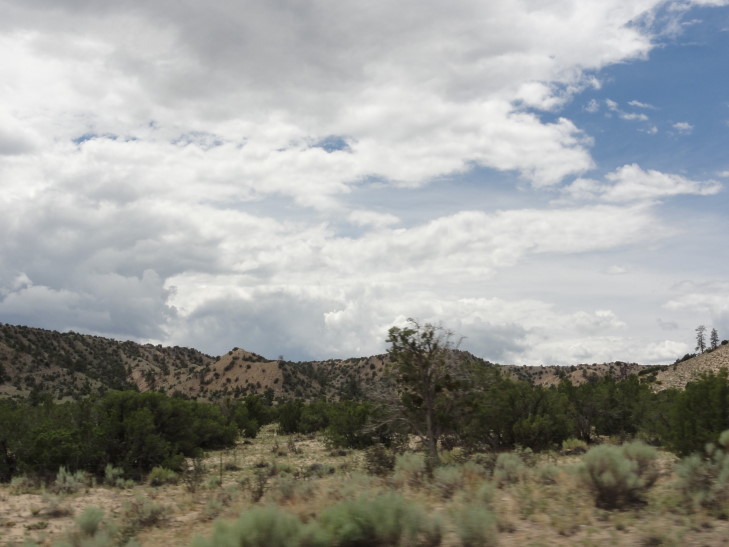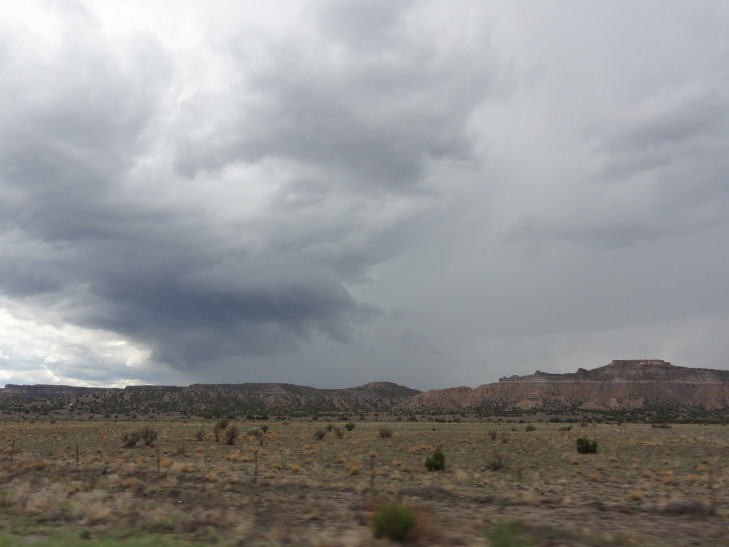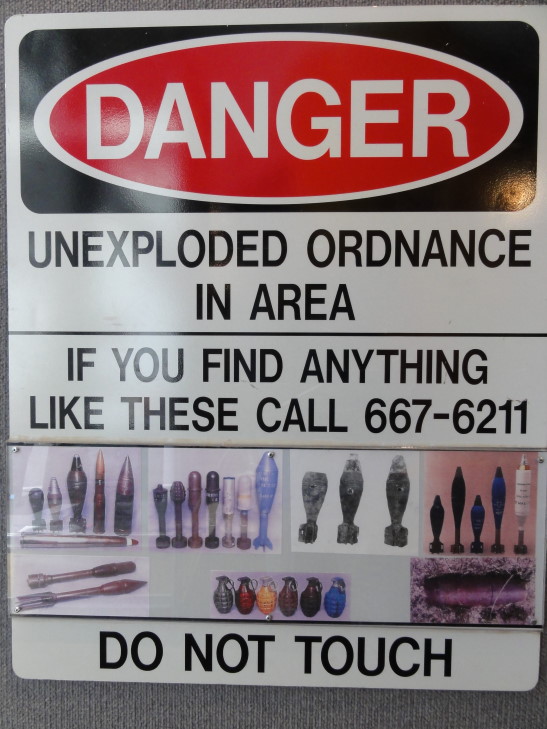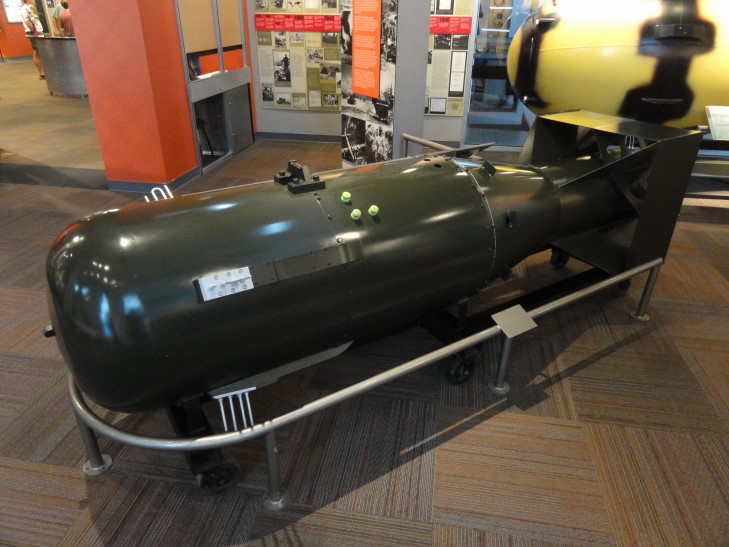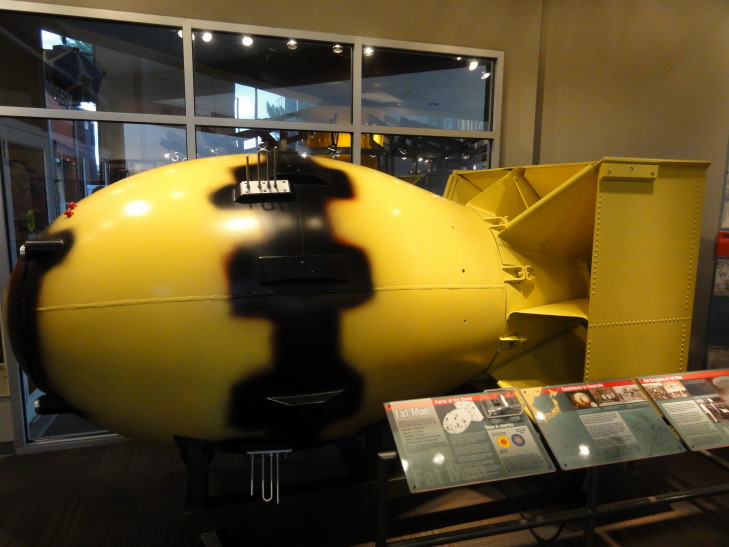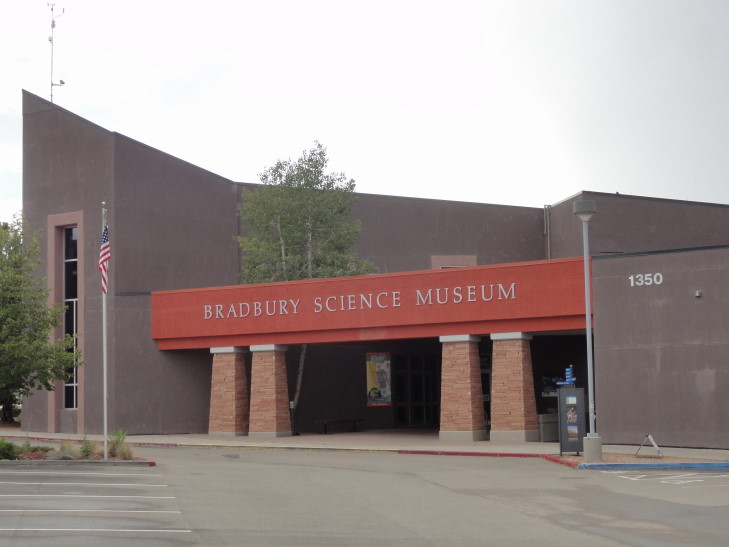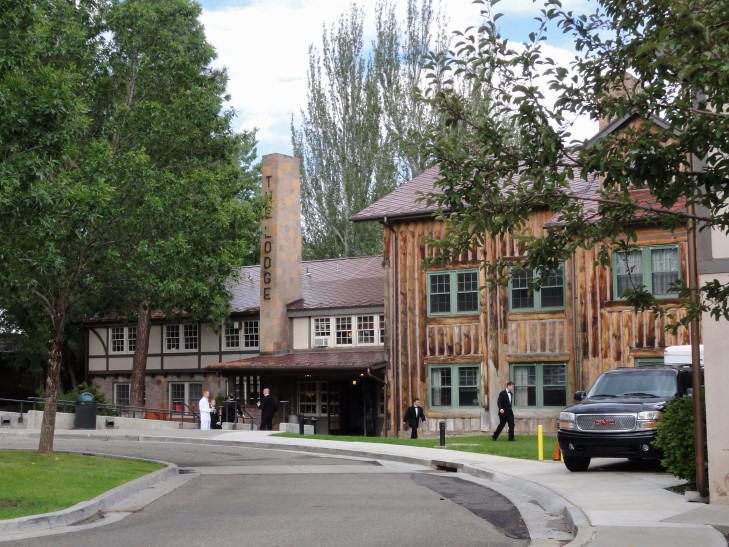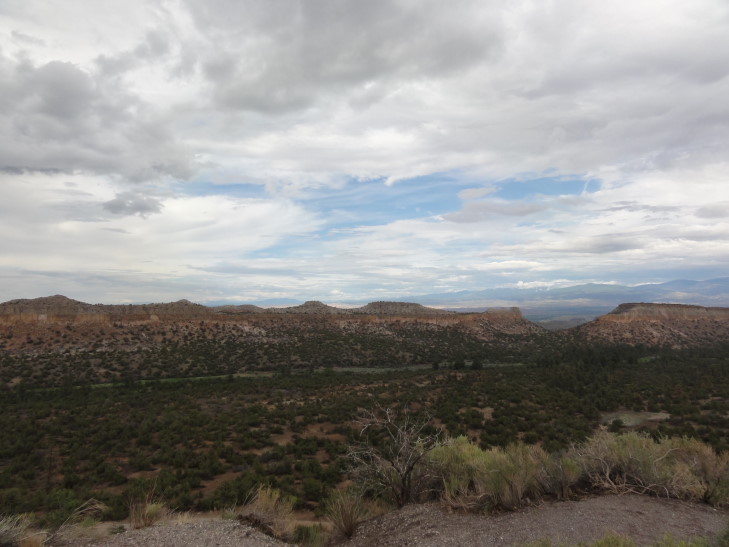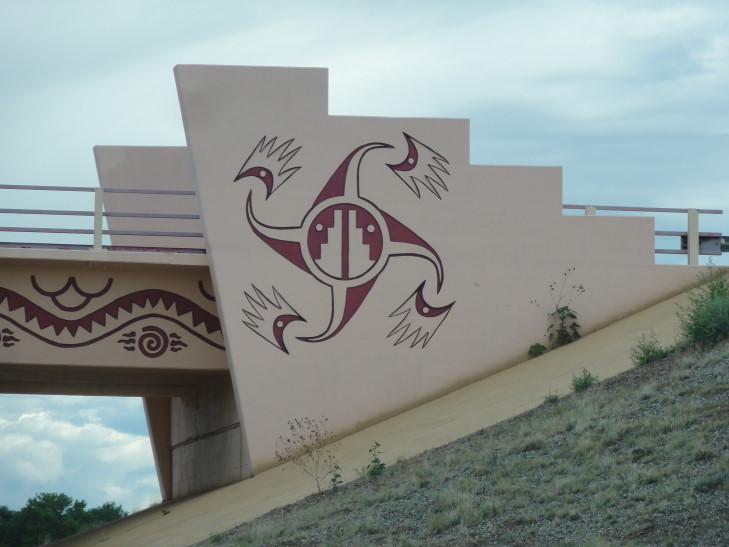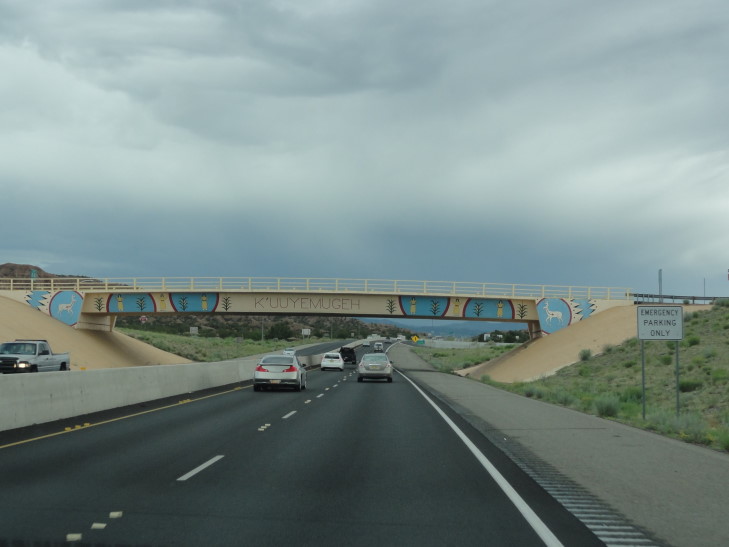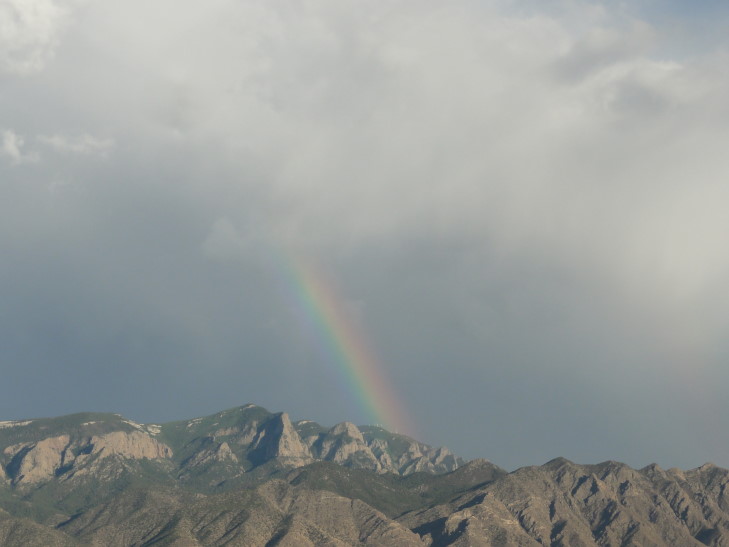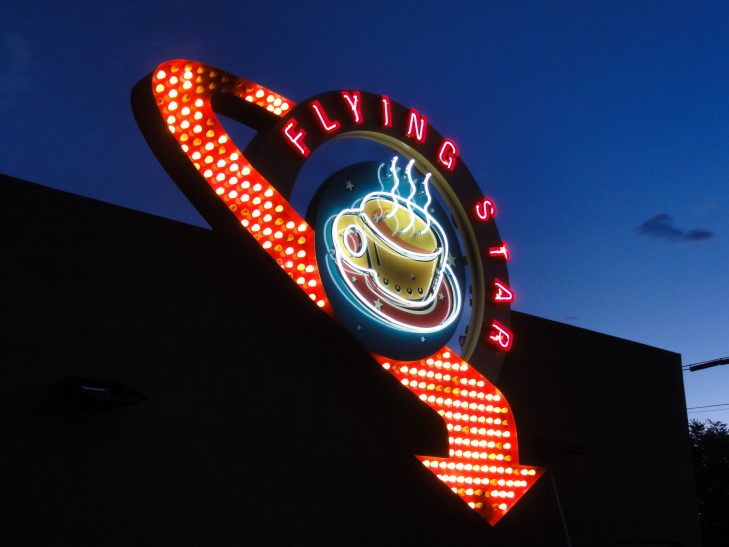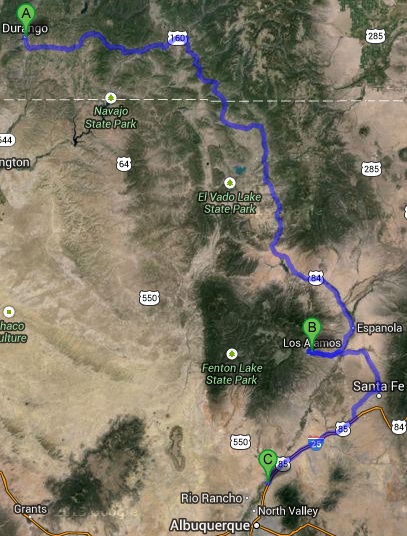We got a bit later start than I’d have liked, hitting the road after packing, checking out, and grabbing some McDonalds at about 10a. Drove east on route 160 through some beautiful, if desolate, hill country where hunting is a primary occupation. We saw many small businesses catering to running hunting trips as well as some that would process the meat from any kill. At Pagosa Springs, a neat little town that apparently had just hosted a “Pirates and Renaissance Fair”, we turned south onto route 84 and entered New Mexico in short order.
The rain had been spotty most of the drive in Colorado. In New Mexico, as the day wore on, it would get quite a bit heavier at times. The terrain in extreme northern New Mexico was much like southern Colorado’s — well-treed hills and small mountains. Eventually it became a bit more typical of what you’d expect of New Mexico — red stone cliffs, sage brush littered sandy soil. We passed in and out of several Indian nations and some pueblos, many of which were adobe.
As we neared Espanola we found a great radio station that was playing a lot of Indian music as well as a tape of a particularly funny comedian — something about Tarzan surprising the Navajo on top of a mesa, and the Navajo thinking he had eaten bad eggs. I guess you’d have to be there, but it was funny. Also the station played some folk songs as well. Just really neat to hear radio that we’d never hear back home.
In Espanola we ate at Chili’s (I didn’t want to, but was overridden — I wanted to try some local Mexican joint called La Cocina or somesuch). It was OK, I guess — it had been a while since we’d eaten Chili’s since Morrisville stole ours a year or so ago. Headed out from Espanola toward Los Alamos, crossing the swollen Rio Grande and watching the terrain switch into full-on scrub land.
We stopped to get gas near a site called Puye Cliffs, abandoned around 1580 but home to over one thousand Indians before that. It was closed due to all of the thunderstorms in the area — which is why we altered our original plan to do Chaco Canyon. Access to Chaco Canyon requires about 40 miles of unpaved road that becomes nearly impassable after a heavy rain like we had.
We climbed steadily to the town of Los Alamos, encountering a gully washer of a storm that’d do even North Carolina proud. The place is a bit surreal, being essentially a planned community. It was originally a boys’ ranch school until the government, on the recommendation of Oppenheimer, used imminent domain to seize the land and built the town that would see the Manhattan Project to its end. The main building of the ranch school as well as the other existing buildings surrounding it became known as Bathtub Row because they had bathtubs while the other living quarters constructed did not. Those buildings were used by the most important scientists (and their families). The town and the project it was working on were kept secret, with it only being referred to as “P.O. Box 1663” in addresses and “the hill” in conversation — using “Los Alamos” was strictly forbidden. Even babies born during the time the Manhattan Project was being worked on have “P.O. Box 1663” listed as their place of birth!
The fission bomb was successfully tested on July 16th, 1945. It is remarkable to think that just three weeks later two were dropped on Japan: Little Boy on August 6th on Hiroshima and Fat Man on August 9th on Nagasaki. Nagasaki had not even been the primary target but bad weather over the primary target caused the last minute switch. After the war the existence of Los Alamos was revealed to the public and it to this day remains a center for research.
We went to the Bradbury Science Museum, named not after Ray Bradbury but rather a former director of Los Alamos. They had an excellent introductory film that covered much of the basics I wrote above. Though a small museum, it was packed with lots of information and hands-on stuff — the kids seem to be quite engaged as well which was nice. They had a number of historical artifacts from the Manhattan Project as well as replicas of Little Boy and Fat Man.
We left the museum and drove down Bathtub Row. Sadly the historical museum was closed, but we still saw a few things. On the way out of Los Alamos we stopped at a viewpoint and took some pictures then headed on towards our stop for the night, Bernalillo. We bypassed Santa Fe on route 599 and saw a couple of bridges with really neat Indian art on it. The mountains surrounding Santa Fe were particularly spectacular in the late evening sun (with tons of storm clouds around to make it even more dramatic).
Arrived in Bernalillo and checked in to our room for the night at the Holiday Inn Express. Saw a gorgeous rainbow from the hotel’s stairway and had to run and grab my camera. Shortly after that we left for dinner at a place recommended by the front desk called “Flying Star Cafe.” It turned out to be quite good and had a really good variety of entrees (including the ever welcome “breakfast served all day!”) and desserts.
Returned to the room after stopping by Walgreen’s and played some pinball on the Vita and blogged. Tomorrow should be a fun day, heading down to Alamogordo via Lincoln where Billy the Kid’s legend was born.
